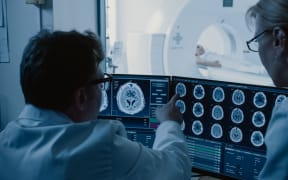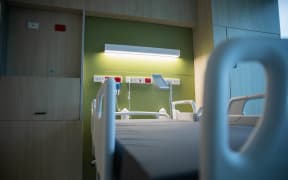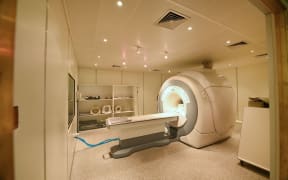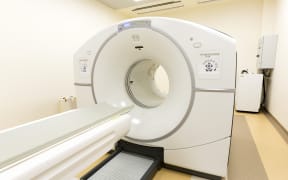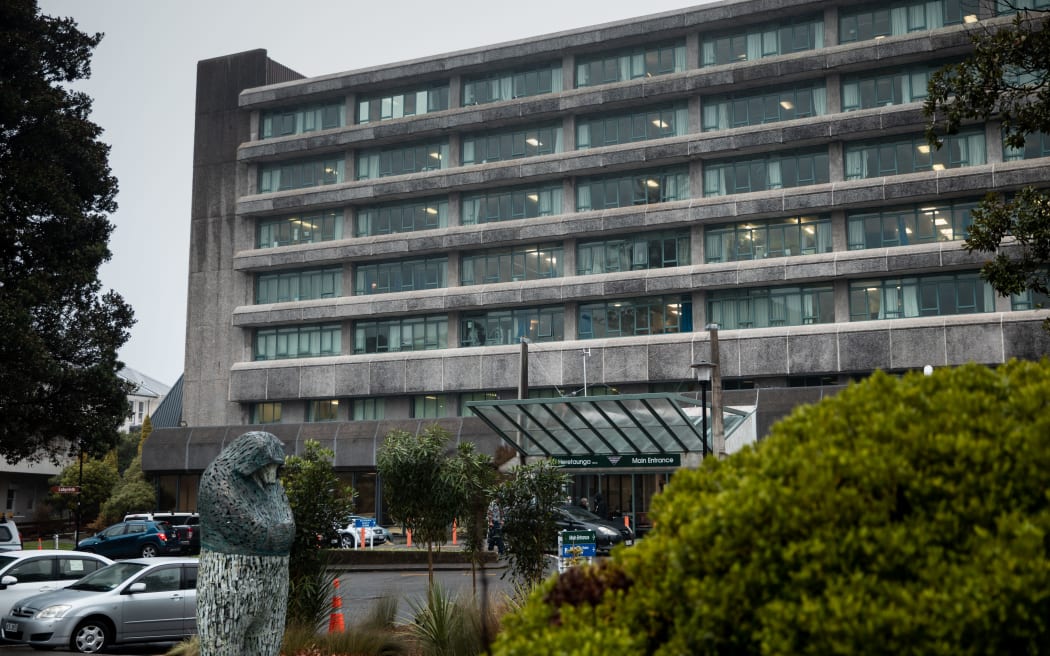
Hutt Hospital was deemed high risk last October and has remained that way. Photo: RNZ / Samuel Rillstone
Five radiology departments at public hospitals have lurched into high-risk territory in the last few months.
Another four are as bad or worse, leaving the country with almost half its hospitals' medical scanning resources with serious shortcomings - mostly too few expert doctors.
The count was almost twice the rate as the last time that RNZ got hold of a risk register, last October, when five were high risk.
- Read more: IANZ radiology departments risk table, Aug 2023 (21.4K)
At the same time, senior doctors have said they intend to work less and less in the public system, and more and more in private clinics.
"Due to constant lack of support, work overload and burnout and lack of flexibility in working hours, I will seek private work," one was quoted telling a new survey by the Association of Salaried Medical Specialists, which represents senior doctors who just voted to strike next month.
- Survey of the future intentions of senior doctors and dentists, ASMS, 2022 (808KB)
Wellington Hospital's radiology department escaped a high risk rating. But new figures show it and Hutt Hospital together had such long waiting lists for ultrasound, MRI and CT scans (11,000 people) that doctors expressed "shock".
In a statement provided on Monday night Te Whatu Ora did not address the high risk ratings directly.
The ratings from International Accreditation of New Zealand (IANZ) constitute the only external independent quality control system of radiology; losing its approval is a barrier to getting ACC funds for scans. Hospitals are always given a chance to fix workforce levels, equipment and service quality, and only suspended as a last resort.
The accreditation was "an important gauge of the quality of a radiology department but is not essential", Te Whatu Ora said.
"The majority of Te Whatu Ora sites have IANZ accreditation."
Te Whatu Ora had previously defended suspended hospitals auditing themselves.
Some of its statement was given over to how an extra five students per year would enter training from now till 2025. However, the training itself takes many years.
The agency asked RNZ to send it a copy of the latest risk IANZ ratings. When RNZ reported the previous risk ratings last October, Wellington Hospital had expressed surprise it was rated high risk, OIA emails showed.
Why the high risk?
The latest August register showed six departments at "high risk", plus Hawke's Bay suspended, and that previously suspended Southland and Palmerston North hospitals had now had to withdraw from IANZ entirely. Te Whatu Ora did not say why.
Five districts at high risk are new on the list - they were not there last October:
- Taranaki - It had the most major non-conformances, at seven. It had only half the nine radiologists needed, the facility was not up to scratch and it had long ultrasound waits.
- Counties Manukau - Had 35 of the 50 radiologists needed, and its crucial reporting technology was labelled "high risk".
- Nelson - Had 3.6 of the 6.5 radiologists needed.
- Waitematā - An "additional 10 [fulltime] radiologist(s) recommended but not actioned. High risk".
- Dunedin - 40 percent too few radiologists. "Potential accommodation problem with new hospital build delayed. Monitoring carefully. Ongoing resourcing depletion."
One department that was deemed high risk last October had remained that way:
- Hutt - Its reporting technology (called RIS, and used by doctors to share and diagnose scan results, to determine treatment) was high risk. The system had been plagued with plodding, freezing and crashing for years, and as recently as last week, when it was newly integrated with Wellington's system to try to salvage it, sources said.
The future looked grim too, according to the new senior doctor survey.
Many doctors split their work between public and private to varying degrees, and just over 40 percent said they intended to reduce their hours in the public system and increase their private hours.
Another 40 percent just wanted to cut their public hours for a better life. Out of 18 specialities surveyed, in eight, more than half the senior doctors said they were likely or "extremely likely" to cut their hours of work for public health providers.
Psychiatrists for example, were experiencing "high levels of burnout, low job satisfaction and poor resourcing for the sector", the survey said. Twenty percent leaving the public sector intended to go fulltime private.
More than 40 percent of radiology scanning was already being done in private clinics (though 30 to 40 percent of those cases were paid for by ACC).
The doctor shortage had been described in one radiology department as "really difficult at the moment", with a daily grind that feels "bad", according to sources.
Tairāwhiti was not rated high risk, nevertheless, IANZ said "resourcing is a significant issue in this region, not accurately reflected in the report".
The problems are not new but have been obscured. Te Whatu Ora tried to keep secret from the public - until recently - years of serious radiology problems at the Hawke's Bay's hospital in Hastings, where tech problems hampered staff and a review found patients were harmed. When exposed last week, the agency said it was fixing the issues.
Hawke's Bay was finally suspended by IANZ last month. However it was still doing scans, as were Invercargill and Palmerston North hospitals, that lost their accreditation months or years ago. Te Whatu Ora previously asserted this was completely safe.
Private radiology clinics were very keen to stay on-side with IANZ because their funding from ACC could depend on it.
Last night Te Whatu Ora said it was on track to establish a national clinical network for radiology by the end of the year, to develop national standards and models of care, find ways to address varying quality, and help services become fairer and more efficient.
As for waiting lists, for CT, MRI and ultrasound respectively, Wellington had 2521, 2715 and 2264 people waiting; Hutt Hospital had 999, 1406 and 1225. A combined waiting list of 11,100 people at the two hospitals.

